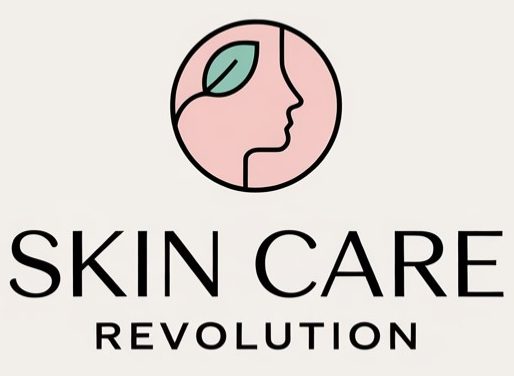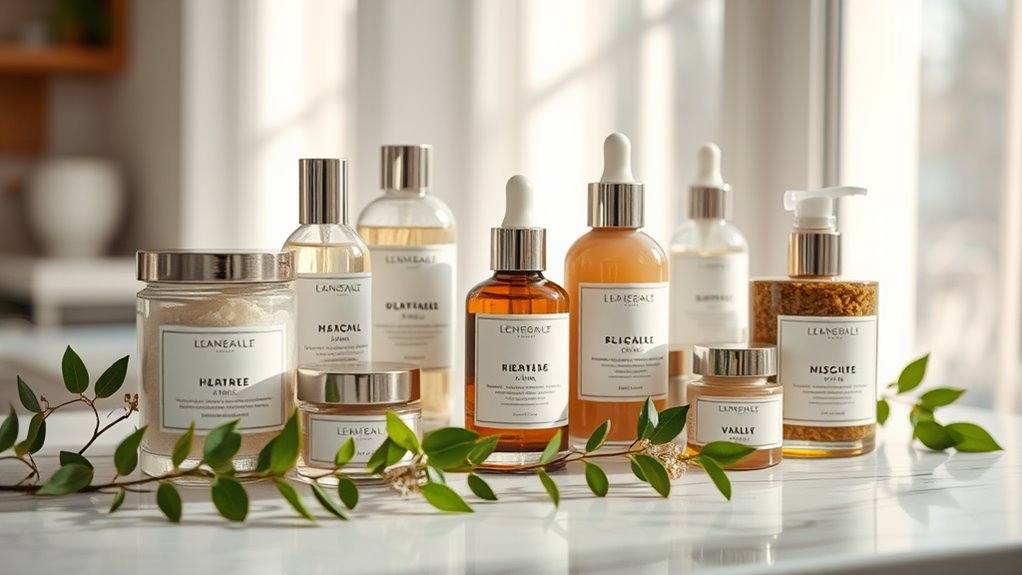The Truth About Cruelty-Free Beauty Products
When it comes to beauty products, the term “cruelty-free” often sparks confusion. You might think it guarantees a vegan formula, but that’s not the case. Understanding what cruelty-free truly means is essential for making ethical choices in your beauty routine. However, not all brands are created equal, and some might not be as transparent as you’d hope. So, how can you verify your purchases align with your values? Let’s explore the key factors to reflect on.
Key Takeaways
- Cruelty-free products are made by brands that do not test on animals, promoting ethical standards in the beauty industry.
- Certification from organizations like Leaping Bunny ensures strict adherence to cruelty-free practices and ongoing commitment to humane treatment.
- Genuine cruelty-free brands often display recognized certification labels, providing transparency about their sourcing and testing methods.
- Many affordable and effective cruelty-free options exist, proving that ethics and quality can coexist in beauty products.
- Choosing cruelty-free helps reduce animal suffering and encourages a shift toward responsible consumerism in the cosmetics landscape.
Understanding Cruelty-Free: Definition and Importance
Cruelty-free beauty products are more than just a trend; they represent a commitment to ethical standards in the beauty industry.
When you choose cruelty-free beauty, you’re supporting companies that reject animal testing and prioritize humane practices. This distinction is essential, as it not only reflects your values but also elevates industry standards.
Understanding the importance of cruelty-free beauty extends beyond personal ethics; it contributes to global shifts toward more responsible consumerism. By opting for cruelty-free options, you’re indicating that you demand transparency and compassion from brands.
This choice fosters awareness and encourages others to reflect on the impact of their purchases. Ultimately, your commitment to cruelty-free beauty empowers a movement toward a more ethical and sustainable future in cosmetics.
The Certification Process for Cruelty-Free Products
While exploring the beauty aisle, you might wonder how brands prove their commitment to being cruelty-free. To achieve certification, companies must adhere to strict guidelines set by recognized organizations, such as Leaping Bunny or PETA.
These organizations require detailed documentation of the manufacturing process, ensuring no animal testing occurs at any stage. Brands often undergo periodic audits and must provide transparency about their suppliers and ingredients.
The certification process isn’t just a one-time check; it’s an ongoing commitment to ethical practices. Additionally, brands may need to sign a pledge to avoid animal testing altogether.
Understanding this process helps you discern which products truly align with your values, empowering you to make informed choices in the beauty aisle.
Identifying Genuine Cruelty-Free Brands
When you’re shopping for cruelty-free beauty products, knowing how to spot genuine brands is key.
Look for certification labels that clearly indicate a commitment to cruelty-free practices, and pay attention to how transparent the brand is about their sourcing and testing methods.
This knowledge empowers you to make informed choices that align with your values.
Certification Labels Explained
Steering through the world of cruelty-free beauty products can be overwhelming, especially with the multitude of certification labels available.
To identify genuine cruelty-free brands, familiarize yourself with the most recognized labels: Leaping Bunny, PETA’s Beauty Without Bunnies, and Choose Cruelty-Free. These organizations have stringent criteria, ensuring that no animal testing occurs at any stage of product development.
Look for products displaying these labels, as they signify a commitment to ethical practices. However, remember that some brands might make misleading claims; thorough research is essential.
Always check the brand’s website for transparency regarding their cruelty-free status and testing policies. With this knowledge, you’ll navigate the cruelty-free landscape with confidence, making informed choices that align with your values.
Brand Transparency Importance
Understanding certification labels is just the beginning of identifying genuine cruelty-free brands. You need to dig deeper into a brand’s practices and policies.
Look for transparency in ingredient sourcing, production methods, and third-party testing. Brands that openly share this information demonstrate a commitment to ethical standards. Check their websites, social media, and product packaging for clear statements about their cruelty-free status.
Also, investigate whether they comply with recognized cruelty-free certifications. Engaging with customer service can provide insights into their practices.
Common Myths About Cruelty-Free Beauty Products
Although many people are enthusiastic to embrace cruelty-free beauty products, they often fall prey to common myths that can cloud their judgment.
One prevalent misconception is that all cruelty-free products are vegan, but remember, cruelty-free simply means no animal testing, not the absence of animal-derived ingredients.
Another myth suggests that cruelty-free products are inferior in quality, but many brands prove that effectiveness and ethics can coexist.
Some assume that cruelty-free items are always more expensive, yet a range of affordable options exists.
Finally, you might think that big brands can’t be cruelty-free, but several well-known companies have adopted ethical practices.
The Impact of Choosing Cruelty-Free on Animal Welfare
When you choose cruelty-free beauty products, you’re actively reducing animal suffering in the cosmetics industry.
Your decision supports ethical practices that prioritize the well-being of animals over profit.
This simple choice can lead to a significant positive impact on their lives.
Reducing Animal Suffering
Choosing cruelty-free beauty products not only benefits your skin but also plays an essential role in reducing animal suffering. When you opt for brands that don’t test on animals, you actively support a movement that prioritizes humane practices.
By making informed choices, you help diminish the demand for outdated testing methods that inflict pain on countless animals. Each purchase sends a message to companies that compassion matters, encouraging them to innovate without cruelty.
Additionally, your commitment can inspire others to follow suit, amplifying the impact on industry standards. As more consumers like you advocate for these ethical alternatives, we collectively forge a future where beauty and kindness coexist, ensuring that the pursuit of self-care doesn’t come at the expense of innocent lives.
Supporting Ethical Practices
By prioritizing cruelty-free beauty products, you’re not just caring for your skin; you’re also supporting ethical practices that greatly influence animal welfare.
Your choices send a powerful message to brands, encouraging them to adopt humane testing methods and prioritize transparency. When you opt for cruelty-free, you’re actively participating in a movement that advocates for the protection of animals, ensuring they’re not subjected to unnecessary suffering in laboratories.
This commitment fosters innovation, as companies seek alternative testing methods that are both effective and compassionate. Each purchase you make reinforces the demand for ethical practices, pushing the industry towards a future where animal testing is obsolete.
Ultimately, your informed choices contribute to a more humane and sustainable beauty landscape.
Making Informed Purchasing Decisions: Tips for Consumers
How can you guarantee your beauty products align with your values? Start by researching brands that prioritize cruelty-free practices.
Look for certifications from reputable organizations like Leaping Bunny or PETA. Don’t just take a brand’s word for it; read ingredient labels and product descriptions.
Familiarize yourself with common animal-derived ingredients to avoid inadvertently supporting cruelty.
Engage with online communities and forums where ethical beauty enthusiasts share their experiences and recommendations.
Consider reaching out to brands directly to inquire about their testing practices.
Finally, keep a list of your trusted brands for easy reference.
Frequently Asked Questions
Are Cruelty-Free Products Safe for Sensitive Skin?
Cruelty-free products can be safe for sensitive skin, but you should always check ingredients. Some formulations may still irritate. Testing a patch on a small area helps determine compatibility before fully committing to a new product.
Do Cruelty-Free Brands Use Synthetic Ingredients?
Yes, many cruelty-free brands do use synthetic ingredients. While some prefer natural alternatives, others incorporate synthetics for performance and stability. Always check labels to guarantee you’re choosing products that align with your preferences and values.
Can Cruelty-Free Products Be Vegan as Well?
Yes, cruelty-free products can definitely be vegan too. When you choose vegan cruelty-free items, you’re not only avoiding animal testing but also steering clear of animal-derived ingredients, aligning with both ethical and environmental values.
How Do I Find Cruelty-Free Products in Stores?
To find cruelty-free products in stores, check labels for certifications like Leaping Bunny or PETA. Research brands online beforehand, and don’t hesitate to ask store employees about their cruelty-free options while shopping.
Are There Any Cruelty-Free Brands Owned by Parent Companies That Test on Animals?
Yes, several cruelty-free brands are owned by parent companies that test on animals. You should research individual brands and their parent companies to guarantee your choices align with your cruelty-free values and principles.

